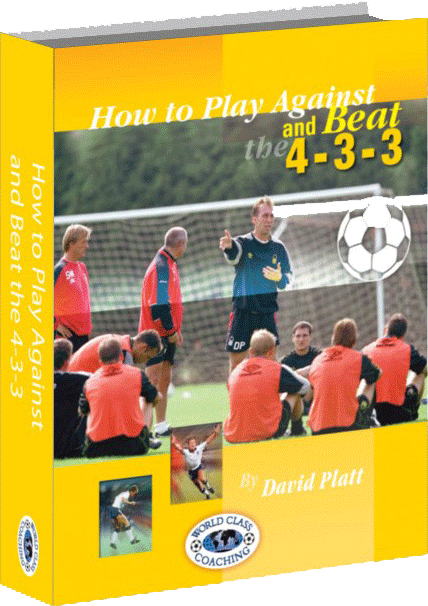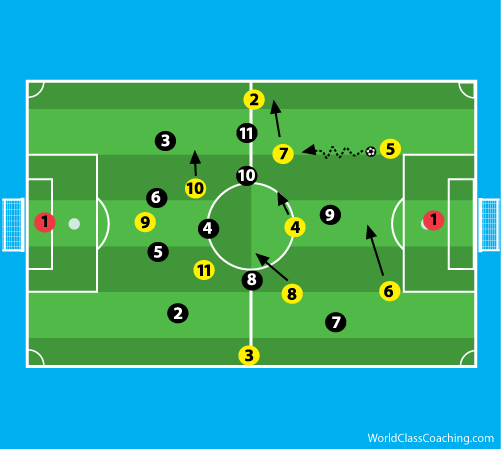Every formation weakness that other teams will look to exploit. It's important to know what other teams might try so that you can prepare your team to deal with them. With this in mind, I read David Platt's, 'How to Play Against and Beat the 4-3-3'. Platt suggests that the best way to deal with a team that is adept at playing the 4-3-3 is to play a variation of the same system, the 4-3-2-1.
This excerpt of the book focuses on how to attack against the 4-3-3 beginning in the back and working through midfield.
Playing with a 4-3-3 system enables that team to be press high up the pitch and limit the ability to play out from the back. Clearly this is something that we cannot allow to happen if we are not to be dictated to and whilst we cannot stop the 4-3-3 from pushing the 3 offensive players on to try and stop us building play up from the back, we can set up our team in a manner which makes it very difficult for them to cope should they do this and we
elect to kick the ball long from our goalkeeper. As you can see below, with 3 attackers from the 4-3-3 pushed on to stop us playing from the back, if we initiate our offensive set up by positioning the players as shown, any long kick that had to be challenged for in the opponents half results in us having numerical superiority. This is primarily down to the bold positioning of our 2 full backs ( 2&3 ) who have pushed on to the half way line in an attempt to drag the wingers of the 4-3-3 back to enables us to start play from the back. Note the position of our 9 who is standing in an offside position initially in an effort to escape his markers.
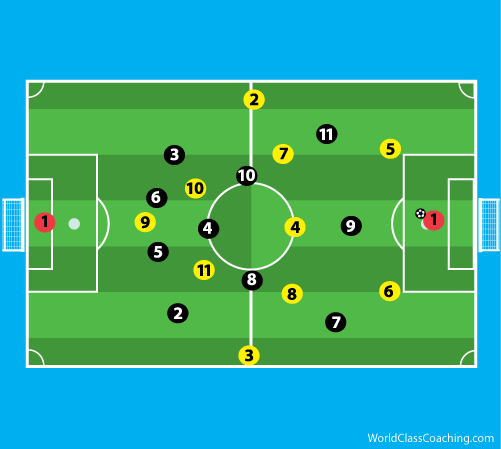
If the 4-3-3 addressed our offensive shape in the manner above then we could either kick the ball long from the goalkeeper as described above, or we could still effect our tactics for playing out from the back.
A ball given to one of the center halves to start play from the back would either result in him being closed down by the winger or the striker, or the wingers would drop off to take care of the aggressively advanced full backs. Below the ball is played to the right sided center half (5). If the left winger came to close him down he could go long or try and manipulate the ball to 2, and if the striker (9) came to close him down he could switch a pass over to 6 who would then have similar options. It is more than likely that the 4-3-3 will drop off into the positions shown in order to be more cautious. The positions of the 3 central midfielders and the 2 ‘hole’ players mean that the opposition have problems of who to pick up and mark these players.
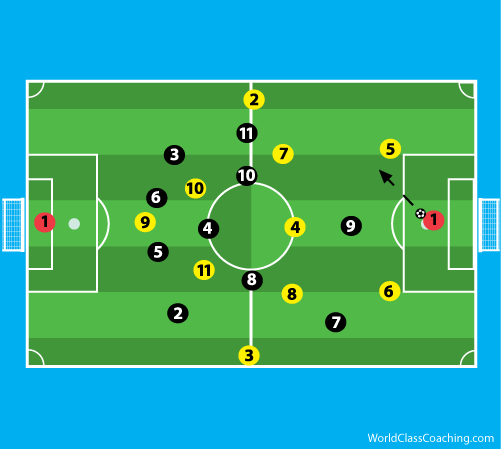
If the lone striker is industrious enough to chase the ball and attempt to close it down, being alone in his efforts enables us to play around him with ease and get our anchor player (4) on the ball.
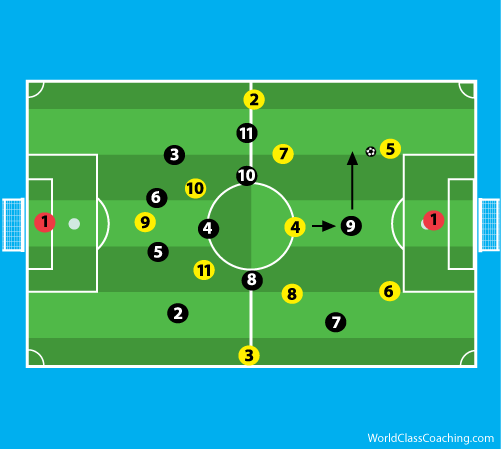
Player 5 now has the option of passing to 4 though if the angle that 9 closes down is too good then he can just switch the ball to his opposite team-mate within the defense and play can be started down the left side.
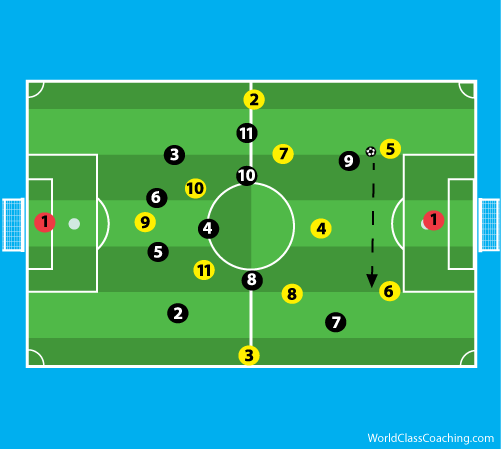
The likelihood is that 9 will not close down for too long should we manage to continue to play around him and he will drop off to be more compact with his team-mates. If this happens it is vital that 5 travels with the ball so that we continue to dictate to the 4-3-3. The forward movement of the full back (2) on that side of the ball is essential to occupy the left back (3) of the 4-3-3, as is the movement of the ‘hole’ player (10) who gives the left back a further problem by being in an area where he needs to be marked. In effect the left back needs help in this situation and will either get it from the left winger (11) retreating or a central midfielder will have to drop deeper to mark. In either case space will be created for other players.
At the same time as adopting this aggressive movement, cover should be given to the offensive set up in order that we can successfully negate any potential counter attack should we lose the ball. 7’s movement outside covers 2’s advancement and also provides 5 with another passing option.
The new shape of the offensive action now looks similar to this.
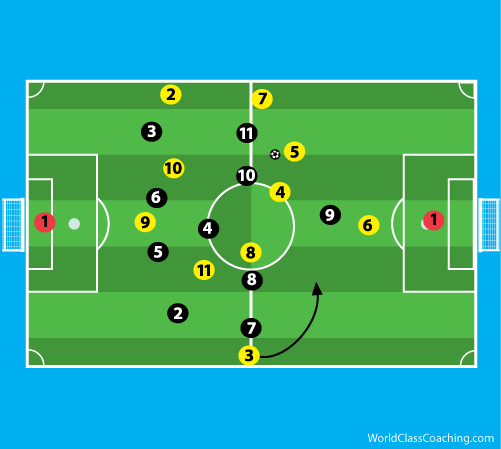
This is just a part of the chapter on Attacking from the back and midfield. We offer this book in both hard copy and eBook format if you'd like to read more of this book.
Have a Great Day!
Tom

